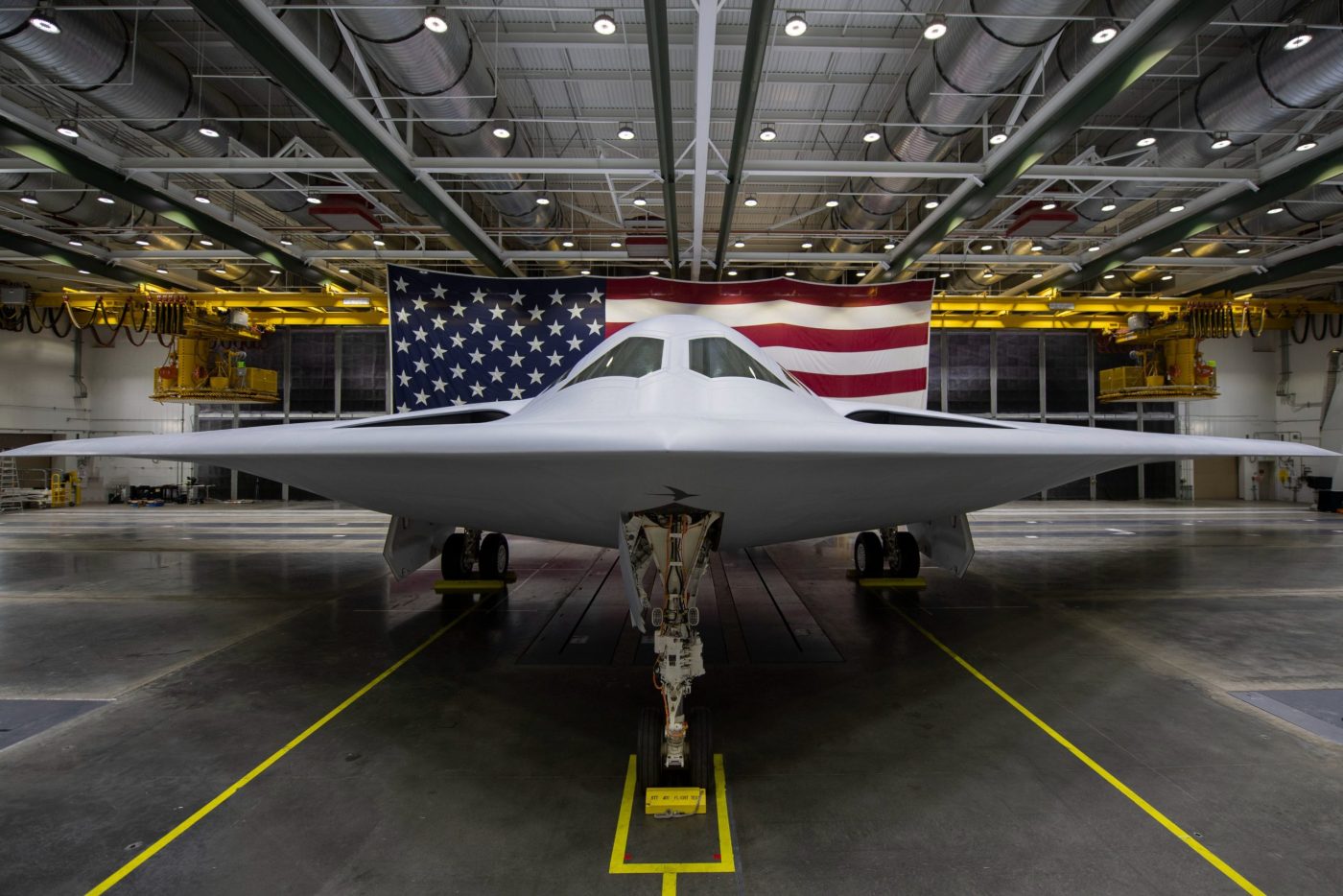Amid fears that the B-21 stealth bomber project could mirror the challenges faced by the troubled F-35 program, Pentagon acquisition and sustainment chief William LaPlante reassured on Feb. 8 that the Raider’s production rate was deliberately set low to mitigate vulnerability to budget cuts.
US Ranking ‘Kicks Out’ India Out Of World’s Most Powerful Countries; South Korea Scores Over Japan
LaPlante, speaking at a virtual RAND event, said that the bomber may never see high production rates as it was designed to withstand uncertainties in Washington’s budgetary landscape.
LaPlante, who previously served as the Air Force acquisition executive overseeing the conception of the Long-Range Strike Bomber (LRS-B), later designated as the B-21 and awarded to Northrop Grumman in 2015, underlined the resilience of the B-21 program amidst uncertainties in Washington.
This approach, he explained, was influenced by the tumultuous developments experienced by the F-35 fighter program, which encountered significant cost overruns and production challenges, culminating in a Nunn-McCurdy breach.
Drawing lessons learned from the F-35 program, LaPlante highlighted the issue of maintaining a consistent production rate, as deviations from planned production levels could hinder cost reduction and learning opportunities.
The imposition of sequestration under the Budget Control Act further exacerbated these challenges, compelling the military services to implement substantial budget cuts.
LaPlante further said it is important to avoid the hitches experienced with the F-35 program by implementing a different production strategy for the B-21, characterized by a deliberate avoidance of large production ramps.
However, the official expressed concern that if Lockheed Martin, the manufacturer of the F-35, failed to produce a sufficient number of aircraft to lower unit costs, the program might enter a “death spiral.”
Typically, higher production quantities lead to lower unit costs as development and overhead expenses are distributed over a larger number of units. Conversely, reducing production quantities results in higher unit costs as overhead costs are spread over fewer units.
Fortunately, this scenario did not materialize, but LaPlante acknowledged that there were apprehensions about its potential occurrence. He conveyed to budget planners that the B-21 program should be untouched to ensure its resilience and stability.
USAF B-21 Raider
The B-21 Raider, positioned as the next-generation stealth bomber for the US Air Force, is slated to replace both the B-1 and B-2 bombers by approximately 2032.
This decision stems from Global Strike Command’s acknowledgment of financial constraints, stating an inability to sustain four types of bombers simultaneously.
Currently, the combined B-1 and B-2 fleets total 64 aircraft, excluding the B-1 involved in a recent crash. Achieving full replacement by 2032 would necessitate an average annual production rate of eight B-21s.
However, certain Air Force officials have privately expressed a desire for expedited B-21 production due to operational requirements and competition for production funding with other projects like the Next Generation Air Dominance fighter and Collaborative Combat Aircraft, both anticipated to undergo high-rate production in the early 2030s.
Initially, the Air Force indicated a planned B-21 inventory of “80-100 aircraft,” later revising it to “a minimum of 100 aircraft.”
Some experts, including former Global Strike Command leaders and various think tanks, argue for a larger fleet, estimating requirements ranging from upwards of 150 to as many as 225 B-21s to maintain operational readiness against potential adversaries like China.
The US recently authorized the award of the B-21 low-rate initial production contract following the successful maiden flight of the first test aircraft in November. The specific details of the LRIP contract, including its value and associated production milestones, remain undisclosed.

Conversely, Chinese experts have critiqued the rapid production pace of the B-21, attributing it to the US’ perceived strategy of containing China, which they argue may have unintended consequences.
Chinese state-run media assert that China is not inclined towards an arms race with the US but is committed to enhancing national defense capabilities, including the development of advanced anti-stealth radar systems, ground-to-air missiles, air superiority fighters, interceptors, and capabilities to target hostile airfields.
Zhang Xuefeng, a Chinese military expert, told the state media — “In addition to precision strike cruise and ballistic missiles, China can also reach hostile airfields with its bombers, including those similar to the B-21.”
On numerous occasions, both the Chinese Air Force and the nation’s aviation industry have suggested the existence of an ongoing development program for a stealth bomber, purportedly referred to as the H-20.
- Contact the author at ashishmichel(at)gmail.com
- Follow EurAsian Times on Google News




